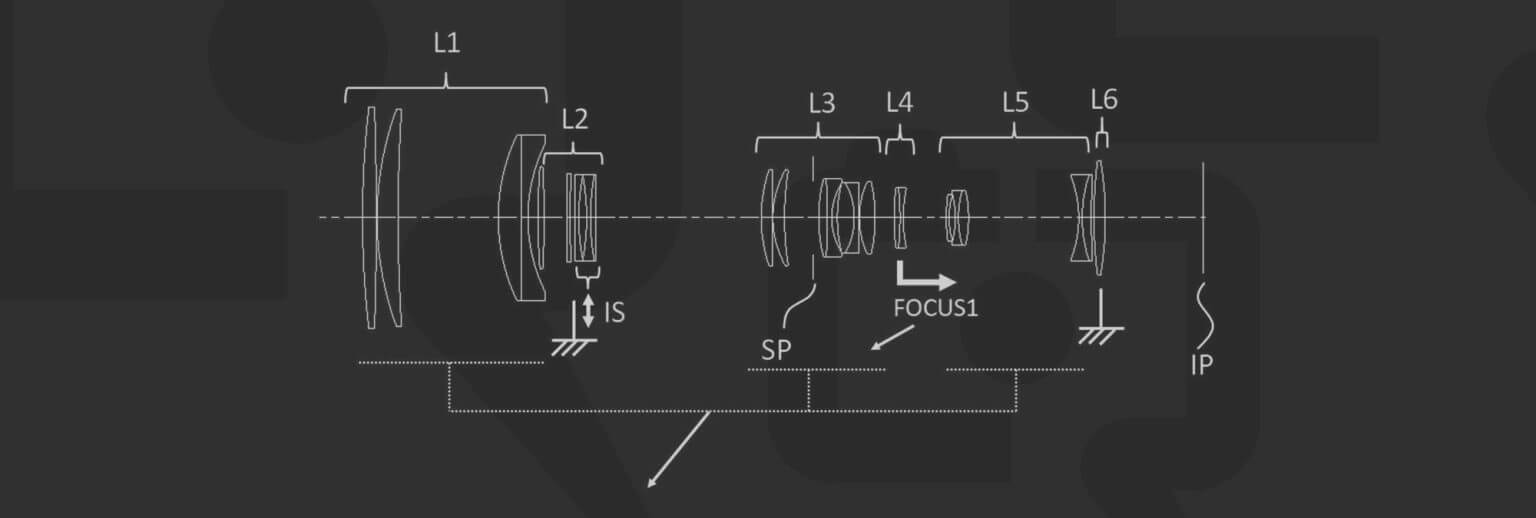In this patent application (2023-125584), Canon is attempting to design lightweight telephotos with good optical characteristics.
First up we have some full-frame telephotos ranging from a 4x 200-800 F5.6-9 to a 6x 100-600mm F5.6-9. The designs are interesting, but they, even with F9.0 would have some pretty big front elements, and at least two large groups, balancing these lenses may be difficult, and if they are lighter, that may actually work against the lens. The IS units seem to be quite a bit more forward than usual on the two telephoto designs. The telephotos are also at the minimum 1.4x tele-extender friendly, with the 100-600 most likely capable of supporting the 2x tele-extender as well.
The APS-C lens would not be used on the RF mount or even the EOS-M mount. It could though be used on an APS-C powershot. With a back focus distance of 10mm, it's not suitable for any Canon ILC (interchangeable lens camera).
Canon RF 100-600mm F5.6-9
focal length 100.02 231.27 599.98 F number 5.83 7.10 9.20 Half angle of view (°) 12.21 5.34 2.07 Image height 21.64 21.64 21.64 Total lens length 300.08 336.79 373.49 BF 77.78 77.78 77.78
Canon RF 200-800mm F5.6-9.0
Focal length 206.00 404.42 775.96 F number 5.83 7.10 9.20 Half angle of view (°) 6.00 3.06 1.60 Image height 21.64 21.64 21.64 Lens total length 330.07 361.31 392.54 BF 38.46 38.46 38.46
Canon APS-C 20-150mm F4-F8
Focal Length 19.99 51.56 150.00 F Number 4.12 6.60 8.12 Half Angle of View (°) 30.77 14.84 5.20 Image Height 11.90 13.66 13.66 Lens length 118.37 134.53 150.69 BF 10.01 10.01 10.01
As with any Canon Patent Application. This may not be used to create an actual product, and may not even get processed into a published patent by Canon. It does however give us a glimpse into what Canon is researching.
Source: Japan Patent Application 2023-125584


Canon DPAF II is capable of decent AF at f11 anyway. What so salty about 800mm/900mm at f9.
If these lenses are Canon's answer to the 180-600/200-600G, I'm getting one.
I've been using the 1.4xTC on the RF 100-500mm to give 700mm f/10 with the R7, and f/10 is quite ok as these cameras go up to very high isos when combined with DxO PL or other modern noise reduction software..
I don't see Canon making an RF 100-600mm F5.6-9 but not having to switch lenses between the RF 100-400 and 600 f/11 would be nice.
This is especially true will a teleconverter.
I realize that camera AF systems are way ahead of those of the past in terms of operating with low light, but the ISO/shutter speed/Aperture triangle hasn't changed.
Won't even mention bokeh.
:rolleyes: :rolleyes: :rolleyes: :rolleyes:
- It weren't for its huge weight
- It weren't for its exhorbitant price
- It weren't for its size requiring the largest possible backpack
And that's why I'll happily accept, as a non professional, its f9 aperture. ;)
My first FF DSLR was a 5DII, and I preferred to keep the ISO at 1600 or lower, but would use 3200 if really needed. With my R3, I prefer to keep it at 12800 or lower but will use 25600 if needed (and if anything, my tolerance for image noise has gotten more stringent over the years).
That’s a 3-stop improvement in ISO, which more than offsets the 2/3 to 2-stop narrower aperture some people are complaining about.
Subject isolation is a different matter (but another area in which AI is being successfully applied).
So why not give them more choices.
Personally, I know both RFs, the 100-400 and the 100-500. And from my point of view, those were definitely good designs.
And for sure, I'd take a 200-800/9 with variable aperture over an 800/11 fixed.
Of course, the MFD would be very interesting/deciding for me.
Let the people decide if they like it or not.
Yes but something similar to the Sigma 200-500 F2.8 would be perfect ;)
I agree...currently using the 600iii F4, and for pelagic birding or raptors I would absolutely use 800 f/9. Some spots I go to are mixed habitat, so I could bring the 800 for the spots where I want that huge reach, then when back in the woods pop the 600 back on. I would get this thing day 1.
That's fantastic....I've also found that the new AI-driven denoising function in LR works great as well...I'm getting very usable shots at 12800 with just that alone.